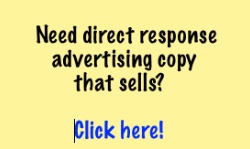Why Super Bowl Sunday is Such a Perilous Day for Business Owners
by Brad Petersen
I love watching the Super Bowl every bit as much as the next guy (or gal for that matter). My friends and I all get together, play flag football, eat Mexican food, drink beer and enjoy the game. It’s a lot of fun and I enjoy every minute of it.
But as great as Super Bowl day is, it can actually be a perilous day for business owners and marketing executives. Why? Because they watch a series of entertaining — and often hilarious — commercials, laugh about them with their friends, and then decide they want their advertising to be entertaining and hilarious, too.
No surprise there. It’s way more fun and exciting to do advertising the Super Bowl way — and it gives you a certain satisfaction to picture others enjoying the entertaining nature of your ads.
Memorable Ads… Forgotten Products
But there’s a snag. You see, with rare exceptions, being funny and entertaining in your advertising simply doesn’t move product. In fact, you’ll find that people often don’t even remember what product or service was being sold by the entertaining commercial they loved so much.
One of the best examples of the dangers of entertaining instead of selling in your advertising comes from one of the most celebrated advertising campaigns in history. The campaign — created by the TWBA/Chiat/Day advertising agency — featured a series of entertaining ads for Nissan USA and featured dolls that looked like Ken, Barbie and GI-Joe riding around in toy Nissans to the sounds of Van Halen’s “You Really Got Me.”
The commercials were, without a doubt, funny and entertaining, and were almost universally hailed as the best ads of the year. The copywriters and art directors behind them were even invited to appear on Oprah.
Memorable Ads… Crashing Sales
Yet despite the apparent success of this campaign, during the first month it ran, Nissan’s sales fell by 2.7% compared to the previous year. The next month, sales fell 10.2% compared to the previous year. And the next month saw a 4% decline. Not exactly the results you’d expect from a beloved multi-million dollar ad campaign.
Perhaps a headline in the Wall Street Journal summed it up best: “Nissan’s Ad Campaign Was a Hit Everywhere but in the Showrooms.”
Meanwhile, Toyota — one of Nissan’s primary competitors — continued to run benefit-oriented ads featuring fat rebates. These ads weren’t very entertaining… they didn’t win any awards and nobody got on Oprah for writing them. However, they were getting bodies into the dealerships and selling cars.
It didn’t take long of course for Nissan to see the error of its ways and to return to more traditional benefit-oriented advertising. And lo and behold, within a month sales had increased 10% over the previous year. And the next month sales increased 15%.
How to Create Ads that Move Products
The lesson is clear: If you want to move product, your advertising must sell that product. And that means ads and sales letters that tell your prospects all the benefits your product will bring them and all the reasons why they should buy it right away.
Of course, if you can do this in a funny and entertaining way, more power to you. But always, always, always test those entertaining ads against your more traditional versions — and track the results religiously. Do that, and the market will quickly tell you whether or not your advertising is effective and worth continuing.

